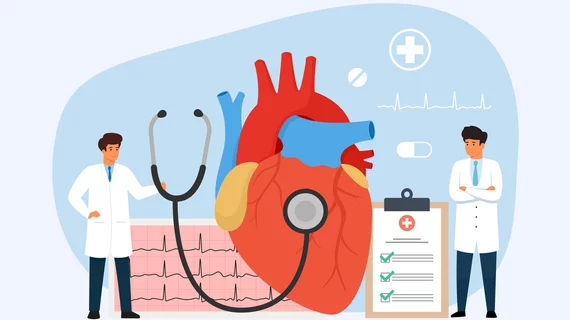Cardiologists work to standardize the diagnosis and management of acute myocarditis
The diagnosis and management of clinically suspected acute myocarditis is an important topic for clinicians from a variety of backgrounds, including cardiologists, primary care physicians, emergency physicians and rheumatologists.
According to new expert recommendations from the American College of Cardiology, diagnosing acute myocarditis begins with an understanding that it can present in one of three ways: as chest pain, as heart rhythm issues or as symptoms related to heart failure/cardiogenic shock.
“The initial step for a clinician is to recognize the condition by being aware of its three classic presentations as outlined in the expert consensus decision pathway,” Mark H. Drazner, MD, MSc, clinical chief of cardiology with UT Southwestern Medical Center and the document’s writing group chair, said in a statement. “Once a patient is diagnosed, clinicians can then follow the next four steps in the care pathway, including triaging the patient, obtaining pivotal diagnostic tests, providing appropriate therapies, and then longitudinal follow-up.”
The ACC recommendations were published in full in the Journal of the American College of Cardiology.[1]
“The definition, diagnostic strategies, prognosis, and recognition of etiologies for myocarditis have recently evolved,” the writing group explained. “Currently, there is variability among classification and diagnostic criteria for myocarditis; an evolving role of imaging, biomarkers, and genetics in its diagnosis and risk assessment; and advances in treatment and management strategies for specific etiologies and severity of myocarditis.”
Drazner et al. cover significant ground, proposing a four-stage myocarditis classification system and highlighting the importance of long-term follow-up beyond the resolution of symptoms.
Another key takeaway is the fact that specialists still have a lot to learn about this complicated condition.
“Further research on a wide range of factors is needed,” the writing group wrote. “These include how social determinants of health impact the development and progression of myocarditis; a need for international registries with diverse stakeholder involvement; improved phenotyping by novel biomarkers, imaging strategies, and refined pathological interpretation of endomyocardial biopsy specimens, including the role of viral polymerase chain reaction testing; the benefits of immunosuppression in lymphocytic myocarditis assessed in large prospective randomized clinical trials; whether unloading of the left ventricle for those on extracorporeal membrane oxygenation improves outcomes; and a greater understanding of the psychological burden on patients and caregivers following an episode of myocarditis.”
Click here to read the full expert consensus decision pathway.

